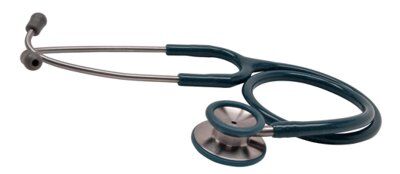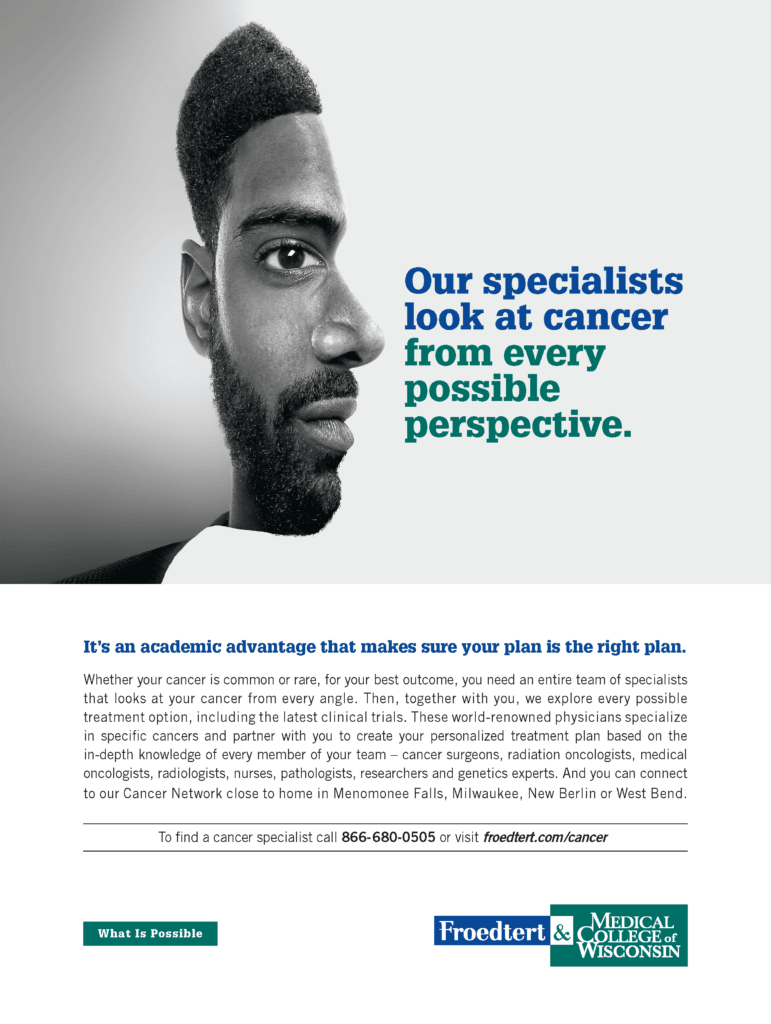The quick start guide to
Medical Copywriting
How To Craft Healthcare Marketing That Matters

CHAPTER 1
An Introduction to Medical Copywriting

What is Medical Copywriting?
Medical copywriting is a specialized form of writing that focuses on creating clear, accurate, and engaging marketing, content, and other promotional materials related to healthcare, medicine, and the life sciences.
The work of medical copywriters often includes patient education materials, articles destined for medical professionals, marketing collateral for pharmaceutical companies, and much more.
Medical copywriters have a unique skill set that combines scientific knowledge, writing expertise, and the ability to communicate complex information in a way that is easy to understand and resonates with various audiences.
The Growing Field of Medical Copywriting
In today's fast-paced world, the healthcare industry is continuously evolving. New medical treatments, devices, and pharmaceuticals are being developed, and healthcare providers are adopting innovative ways to deliver care. In this context, medical copywriting plays a crucial role in:
Educating patients:
Providing accurate, easy-to-understand information helps empower patients to make informed decisions about their health and treatment options.
Supporting medical professionals:
Medical copywriters create content that keeps healthcare professionals up-to-date on the latest research, guidelines, and best practices, enabling them to provide the best care possible.
Promoting public health:
Clear, engaging health messages are essential for raising awareness about critical public health issues and promoting healthy behaviors.
Driving innovation:
Medical copywriting helps showcase new medical products, services, and technologies to potential customers and investors, fostering growth and innovation in the healthcare industry.
The Role of a Medical Copywriter
As a medical copywriter, you will wear many hats and take on a variety of responsibilities, depending on your niche and the target audience for your content. Some typical medical writing jobs include:
Researching:
Digging into scientific literature, interviewing subject matter experts, and staying current on industry trends to create accurate, up-to-date content.
Writing and editing:
Crafting engaging, informative, and concise copy for a range of formats, from patient brochures to research articles, while adhering to style guidelines and best practices.
Translating complex information:
Simplifying medical jargon and presenting complex concepts in a way that is easily understood by your target audience, whether they are patients, medical professionals, or the general public.
Collaborating:
Working closely with other professionals, such as doctors, scientists, medical illustrators, and marketing teams, to develop content that meets the needs of your clients and their audience.
Ensuring compliance:
Adhering to ethical standards and industry regulations to produce content that is accurate, reliable, and respectful of patient privacy.
Now that you have a better understanding of what medical copywriting is and why it's so essential in the healthcare industry, you're ready to explore the skills needed to excel in this field and the various types of content you could be creating. Let's continue our journey and discover the world of medical copywriting together!
CHAPTER 2
Skills Required for Medical Copywriters

To thrive as a medical copywriter, you need to possess a unique blend of skills that set you apart from other writers. In this section, we'll delve into the key skills that will help you excel in your medical copywriting career and create compelling, informative content for your audience.
Scientific Knowledge & Medical Terminology
A strong foundation in science and medicine is essential for a medical copywriter. Familiarity with medical terminology, anatomy, physiology, and pharmacology will enable you to understand complex concepts and communicate them effectively to your target audience.
For example, if you're writing about a new cancer treatment, you need to know the difference between chemotherapy, radiation therapy, and immunotherapy, and be able to explain their mechanisms of action in layman's terms.
While a background in healthcare or life sciences can be advantageous, you can also build your scientific knowledge through self-study, online courses, or relevant certifications.
Writing and Communication Skills
Exceptional writing and communication skills are the cornerstone of medical copywriting. As a medical copywriter, you should be able to:
For example, when writing a patient education brochure about diabetes, you might use simple language and relatable examples to explain the importance of blood sugar control and the potential complications of poor management. And at the same time, if the educational brochure was meant for pre-med students, the language you'd use would be entirely different.
Research Skills
Medical copywriters need strong research skills to gather accurate, up-to-date information for their content. This might involve:
For instance, when writing an article about the benefits of a new cholesterol-lowering drug, you might conduct a literature review to identify relevant clinical trials and then analyze their results to draw evidence-based conclusions.
Adaptability and Creativity
The healthcare landscape is constantly evolving, and as a medical copywriter, you need to adapt to new topics, formats, and trends. This requires a curious mindset, a willingness to learn, and the ability to think creatively.
Adaptability and creativity can help you:
For example, you might use an engaging narrative or an analogy to explain a complex medical concept, like comparing the immune system to a security team protecting the body from harmful invaders trying to get in and do harm.
Armed with these essential skills, you're well on your way to becoming a successful medical copywriter. In the next sections, we'll explore the various types of content you might create and the specific audiences you'll be writing for.
CHAPTER 3
Understanding the Target Audience

One of the most critical aspects of medical copywriting is knowing your target audience and tailoring your content to meet their needs, preferences, and expectations. In this section, we'll explore three common audience categories that medical copywriters often write for: patients, medical professionals, and pharmaceutical marketing.
Patient Education Materials
When writing for patients, it's essential to create content that is accessible, informative, and engaging. The goal is to empower them with knowledge about their health conditions, treatments, and self-care strategies. Some examples of patient education materials include:
To connect with this audience, you'll want to consider the following tips
Medical Professionals & The Scientific Community
When creating content for medical professionals and the scientific community, you need to adopt a more formal and technical writing style. This audience seeks accurate, evidence-based information that helps them stay current on the latest research, guidelines, and best practices. Examples of content for this audience include:
To effectively communicate with this audience, keep the following tips in mind:
Medical & Pharmaceutical Marketing
In these kinds of marketing, the goal is to create persuasive, engaging content that promotes a product, service, or brand while adhering to ethical and regulatory standards. Some examples of pharmaceutical marketing materials include:
To successfully write for medical or pharmaceutical marketing, consider these tips:
By understanding your target audience and tailoring your content to meet their needs, you'll be well-equipped to create impactful medical copywriting that educates, informs, and persuades. In the next sections, we'll delve deeper into the specific types of content you might create for each audience and the ethical considerations involved in medical copywriting.
CHAPTER 4
Ethical and Regulatory Compliance

As a medical copywriter, it's crucial to adhere to strict ethical and regulatory guidelines to ensure that your content is accurate, trustworthy, and respectful of patients' rights. In this section, we'll discuss the key considerations that should guide your work in medical copywriting.
Ensuring Accuracy and Reliability
When writing about health and medical topics, it's essential to ensure that your content is accurate, up-to-date, and reliable. Providing misleading or outdated information can have serious consequences for patients, healthcare providers, and your professional reputation. To ensure accuracy and reliability:
For example, if you're writing about a new treatment for migraines, make sure to cite the latest clinical trials, discuss the benefits and potential side effects, and include expert opinions to provide a balanced, evidence-based perspective.
In addition to this, medical copywriters must also ensure that their claims are not misleading. This means that they cannot make exaggerated or false statements about a product's benefits or effectiveness. Doing so can result in penalties and legal issues for both the writer and the company they are working for.
Risk Information: Ensuring Transparency
Another important aspect of compliance in medical copywriting is providing adequate risk information. The FDA requires that all promotional materials for drugs and medical devices include information about potential risks and side effects. Medical copywriters must ensure that this information is presented clearly and prominently.
This means that risk information cannot be buried in small print or hidden away at the bottom of a page. It must be presented in a prominent way that is easy to understand and accessible to readers. Medical copywriters must also ensure that they do not downplay or minimize potential risks associated with a product.
Fair Balance: Providing an Objective Viewpoint
Fair balance is another key concept in compliance rules for medical copywriting. Fair balance requires writers to present an objective viewpoint when discussing products or treatments. This means presenting both the benefits and risks associated with a particular drug or device.
Medical copywriters cannot focus solely on the positive aspects of a product while ignoring potential risks or downsides. They must provide readers with an objective view of the product, allowing them to make informed decisions about whether or not it is right for them.
Protecting Patient Privacy
Respecting patient privacy is a fundamental ethical principle in healthcare, and it also applies to medical copywriting. When sharing patient stories, case studies, or testimonials, you should:
For instance, if you're writing a case study about a patient with a rare genetic disorder, you could use a pseudonym and avoid including specific details that could inadvertently identify the individual.
In addition to FDA regulations, medical copywriters must also comply with other laws and regulations. Let's take a look at the most important ones...
Compliance, Industry Standards & Regulations
Medical copywriting is subject to various industry standards and regulations, which can vary depending on your target audience, content format, and geographic location. Some examples of regulatory bodies and guidelines include:

To ensure compliance with these standards and regulations:
For example, when writing promotional materials for a new prescription drug, you should include information about the approved indications, potential side effects, and contraindications, following all governmental guidelines for responsible drug promotion.
By adhering to ethical and regulatory guidelines, you can create medical copywriting that is not only engaging and informative but also trustworthy and respectful of your audience's needs and rights.
CHAPTER 5
Career Path of the Medical Copywriter

Medical copywriting is a career that requires a unique set of skills, including strong writing abilities, knowledge of medical terminology, and an up-to-date understanding of healthcare topics. As the healthcare industry continues to grow, so does the demand for medical copywriters.
The Medical Copywriter Career
A career in medical copywriting can take many forms. Medical copywriters can work for pharmaceutical companies, healthcare organizations, or as freelance writers. They may write content for websites, social media posts, brochures, or other marketing materials. Some medical copywriters specialize in writing scientific papers or regulatory documents.
One advantage of working as a medical copywriter is the flexibility it offers. Freelance writers can work from anywhere in the world and set their own schedules. There are opportunities to work on a variety of projects and topics.
To become a successful medical copywriter, it is essential to have strong writing skills and knowledge of medical terminology. Many employers require a bachelor's degree in English or communications with coursework in science or medicine.
Perspective Shift for Medical Copywriters
Medical copywriting requires more than just strong writing skills; it also requires an understanding of healthcare topics from both patient and provider perspectives. A good medical writer must be able to translate complex scientific information into language that is easy to understand by patients while also meeting regulatory requirements.
As they write about health conditions and treatments every day, medical writers develop an intimate understanding of these subjects which allows them to see things from different angles compared to non-medical writers who may not have any experience in this field.
Furthermore, working as a medical writer provides insight into the healthcare industry that few other professions offer. This includes learning about new treatments and technologies before they become widely available to patients.
How to Become a Medical Copywriter
Mastering the art of medical copywriting is no easy feat. It requires a deep understanding of clinical care, the ability to translate complex medical concepts into clear, concise language, and an unwavering commitment to ongoing learning and professional development.
Before you become a Medical Copywriter, you must first have a solid foundation in Copywriting. This can be done by taking an advance course (like the Copywriting Masterclass). And once you have a deep understanding of copywriting, you can move on to your specialization. Here's how to do it:
Pursue an Advanced Degree in a Related Field
One of the pathways to becoming a remote medical copywriter is by obtaining a degree in a related field such as medicine, nursing, or life sciences. This provides individuals with the foundational knowledge and understanding of medical terminology, anatomy, physiology, and pharmacology. It also helps them develop research skills and critical thinking abilities that are essential for medical writing.
For instance, individuals with degrees in medicine or nursing have an advantage those with degrees in life sciences have an understanding of biological processes and scientific research methods that are useful when writing about clinical trials or drug development.
However, obtaining a degree may not be feasible for everyone due to time constraints or financial limitations. In this case, taking courses or certifications in medical writing can be an alternative pathway.
Take Courses or Certifications in Medical Writing
Another pathway to becoming a remote medical copywriter is by taking courses or certifications in medical writing. These programs provide individuals with the necessary skills and knowledge needed to write effectively about medical topics.
There are several online courses available that cover different aspects of medical writing such as regulatory writing, scientific publications, and marketing materials. Some examples include:

Network With Professionals in the Field
Networking with professionals in the field is another pathway to becoming a remote medical copywriter. This can be done by attending conferences or joining professional organizations such as AMWA or ISMPP.
Networking provides individuals with opportunities to learn from experienced writers and editors, as well as connect with potential clients or employers. It also helps them stay up-to-date on industry trends and developments.
Build a Portfolio of Medical Copywriting Samples
Building a portfolio of medical writing samples is another way to showcase one's skills and expertise as a medical copywriter. This can be done by volunteering to write articles for healthcare organizations or creating content for medical blogs.
Having a portfolio of writing samples demonstrates to potential clients or employers that an individual has experience in writing about medical topics. It also shows that they have the ability to write in different styles and formats such as blog posts, white papers, and case studies.
CHAPTER 6
Work as a Medical Copywriter

As the healthcare industry grows, the demand for medical copywriting is on the rise. There are several different ways in which you can start to work as a medical copywriter. Let's explore the most common options...
Working at a Medical Marketing Agency
Medical communications marketing agencies are an exciting and dynamic field to work in. As a medical communicator, you can expect to work on client outreach and communications to promote healthcare services and products. In this blog post, we will discuss what it's like working at a medical communications marketing agency.
Understanding Medical Marketing Agencies
Medical marketing agencies specialize in creating marketing strategies for healthcare companies and pharmaceutical companies. These agencies employ a range of professionals with different skills, including writers, designers, project managers, and social media experts. The goal of these agencies is to help clients market their products or services effectively.
Jobs in Medical Marketing Agencies
If you're interested in working at a medical marketing agency, there are many different types of jobs available. These can range from clinical jobs to social media management. If you’re just starting out, healthcare industry job boards are a good place to find job openings in medical marketing agencies.
One example of a job in this field is that of a medical writer. Medical writers create content for various audiences, including patients, healthcare providers, and regulatory bodies. They may write anything from product brochures to scientific manuscripts.
Another type of job is that of an account manager. Account managers act as the primary point of contact between the agency and the client. They ensure that projects are completed on time and within budget while also maintaining strong relationships with clients.
Subcontracting Under Medical Copywriters
Subcontracting is a common practice in the copywriting business. Freelance copywriters can offer their services to other copywriters who have more clients than they can handle. By subcontracting, copywriters can take on more work without having to turn down clients or compromise the quality of their work. This is especially true for medical copywriting, where expertise and experience are crucial.
One of the benefits of subcontracting under other medical copywriters is that it provides an opportunity for freelancers to gain experience and build their portfolio.
As a freelance copywriter, it is important to establish yourself as an expert in your field. Subcontracting allows you to work with established medical copywriters who have already built a reputation in the industry.
Another benefit of subcontracting is that it allows you to expand your network and build relationships with other professionals in the industry. By working with other medical copywriters, you may be introduced to new clients or opportunities that you would not have had access to otherwise.
Finding Clients as a Freelance Copywriter
The third option is to start working as a freelancer and building up your own business. Out of the three options, this is perhaps the hardest route. But also the most profitable one in the long run.
Here are a few ways to find clients as a freelance medical copywriter:
Attend Industry Events, Conferences, and Conventions
Attending industry events and conferences is an excellent way to expand your network as a medical copywriter. These events offer opportunities to meet potential clients, colleagues, and other professionals in the healthcare industry. By attending these events, you can learn about the latest trends and developments in the field while also making valuable connections.
To make the most of these events, it's important to be prepared. Research the event beforehand to identify key speakers or attendees you'd like to meet. Bring business cards and be ready to introduce yourself and discuss your work as a medical copywriter. Be sure to follow up with any contacts you make after the event.
Join Online Communities and Forums for Medical Writers
In addition to attending live events, joining online communities and forums for medical writers is another effective way to grow your network. These groups provide opportunities to connect with other professionals in the field, share ideas, ask questions, and learn from others' experiences.
When joining online communities or forums, take time to read through previous posts before contributing. Be respectful of others' opinions and avoid self-promotion unless it's explicitly allowed by the group rules. By actively participating in these groups over time, you can establish yourself as a knowledgeable expert in medical copywriting.
Be Active On Social Media
Social media platforms like LinkedIn are powerful tools for networking with professionals in the healthcare industry. Create a professional profile that highlights your skills as a medical copywriter and connect with others in related fields.
When reaching out on social media platforms like LinkedIn, be sure to personalize your message rather than sending generic requests. Consider offering value upfront by sharing relevant content or insights that may be useful for your connection's work.
Guest Post on Relevant Websites and Blogs
Offering guest posts on relevant blogs or websites is an excellent way to showcase your expertise while expanding your reach beyond your existing network. Identify blogs or websites that cater to your target audience and offer to contribute an article on a relevant topic.
When pitching guest posts, be sure to provide a clear outline of your proposed article and explain why it would be valuable for the blog or website's readers. By providing high-quality content, you can establish yourself as a thought leader in medical copywriting while also growing your network.
Collaborate With Other Medical Writers
Collaborating with other medical writers on projects is another effective way to build relationships and gain exposure. Reach out to other writers in the field and propose joint projects that highlight both of your skills.
When collaborating with others, be sure to establish clear expectations upfront regarding roles, timelines, and compensation if applicable. By working together effectively, you can create high-quality work that showcases both of your talents while also expanding your network.
Working with other medical copywriters also helps expand your network and reach new users. Collaborating allows writers to connect with others in the industry, leading to potential referrals and future collaborations.
Build Your Team
Some clients may require an entire team of medical copywriters to produce high-quality content. In such cases, collaborating with other writers can help you meet the client's needs effectively.
For instance, if you are working on a project related to mental health, you may need someone who specializes in psychology while another writer focuses on psychiatry.
Find More Clients With Referrals and Testimonials
Finally, don't underestimate the power of referrals or testimonials from former clients when growing your network. Reach out to previous clients who were pleased with your work and ask if they'd be willing to refer you to others or provide a testimonial for your website or portfolio.
When asking for referrals or testimonials, be respectful of their time and make it easy for them by providing suggested language they can use. By leveraging positive feedback from previous clients, you can strengthen your credibility and reputation as a medical copywriter.
CHAPTER 7
Copywriting For Patients

Creating patient-friendly health information is an essential skill for medical copywriters. By making your content accessible, easy to understand, and relevant to your readers' needs, you can empower patients to make informed decisions about their health and well-being.
Simplifying Medical Jargon
Medical jargon, or specialized terminology, can be confusing and intimidating for patients who lack a background in healthcare. To make your content more accessible, try the following tips:
For instance, when discussing diabetes management, the patient will more readily understand that "hyperglycemia" means high blood sugar and that "insulin" is a hormone that helps regulate the blood sugar levels in their body.
Here's a great example. This is a hand-out meant to educate the patient about Antiplatelet Medicines. It explains everything in a concise and easy-to-understand manner:

PCNA Antiplatelet Patient Education Hand-out
Using Plain Language & The Active Voice
Plain language is a writing style that prioritizes clarity, simplicity, and readability. By using plain language and active voice in your medical copywriting, you can make your content more engaging and easy to understand. Consider these tips:
Considering Health Literacy
Health literacy refers to an individual's ability to obtain, understand, and use health information to make informed decisions about their health. When writing for patients, it's essential to consider their health literacy levels and tailor your content accordingly. Some tips to enhance your content's readability for diverse audiences include:
For instance, when creating a brochure about managing high blood pressure, you might use simple language, clear headings, and bulleted lists to explain the benefits of lifestyle changes, such as eating a balanced diet, exercising regularly, and reducing stress.
By implementing these strategies, you can create patient-friendly health information that empowers your readers and supports their journey towards better health. As you continue to refine your medical copywriting skills, you'll be well-equipped to tackle a variety of health topics and communicate effectively with diverse audiences.
CHAPTER 8
Copywriting For Medical Professionals

In addition to writing for patients, medical copywriters often create content for medical professionals, such as physicians, nurses, pharmacists, and researchers. This type of content requires a more advanced level of knowledge and a different approach to writing.
Research Articles & White Papers
Research articles and whitepapers are important forms of communication in the medical community, as they share new findings, insights, and perspectives on various health topics. When writing research articles and whitepapers, keep the following tips in mind:
For example, when writing a research article about the impact of telemedicine on rural healthcare access, you might conduct a literature review, analyze data from various studies, and discuss the implications of your findings for healthcare providers and policymakers.
Content for Continuing Medical Education (CME)
Continuing medical education (CME) is a crucial component of lifelong learning for healthcare professionals, as it helps them maintain their skills, stay up-to-date with the latest research, and improve patient outcomes. When developing CME content, consider the following guidelines:
For instance, when creating a CME course on pain management for primary care providers, you might include video lectures, case-based discussions, and a quiz to assess participants' knowledge and skills.
New and specialized platforms make CME an exciting new field of opportunity for medical copywriters to explore. Here's just one example:

CME is a growing field of opportunity for Medical Copywriters
Writing for Medical Conferences & Events
Medical conferences and events provide valuable opportunities for healthcare professionals to network, learn, and share their expertise. As a medical copywriter, you might create various types of content for these events, such as:
To write effective content for medical conferences and events:
For example, when creating a poster about a novel surgical technique for a conference on orthopedics, you might include images of the procedure, data on patient outcomes, and a brief overview of the technique's advantages and potential applications.
By mastering the art of writing for medical professionals, you'll be able to contribute to the ongoing advancement of healthcare knowledge and practice. As you develop your skills in writing research articles, whitepapers, CME content, and materials for medical conferences and events, you'll become a valuable resource for healthcare providers and researchers alike.
With these strategies and techniques in hand, you're well-prepared to create compelling, informative content for a wide range of medical audiences. Whether you're writing for patients, medical professionals, or both, your work as a medical copywriter has the potential to make a significant impact on the health and well-being of countless individuals. Keep honing your skills, staying curious, and embracing the challenges and opportunities that come your way.
CHAPTER 9
Copywriting for Pharmaceutical Marketing

Pharmaceutical marketing is a vital part of the healthcare industry, as it helps to raise awareness of new medications, devices, and treatments that can improve patient outcomes. As a medical copywriter, you may find yourself working on various marketing projects for pharmaceutical companies, ranging from marketing collateral to social media content and promotional materials.
Developing Marketing Collateral
Marketing collateral refers to the range of print and digital materials used to promote a product or service, such as brochures, flyers, and product catalogs. When creating marketing collateral for pharmaceutical companies, consider the following tips:
For example, when creating a brochure for a new asthma medication, you might describe its mechanism of action, clinical trial results, and patient testimonials, as well as include visuals that illustrate how the medication works and the benefits it offers.
Writing for Social Media & Medical Blogs
Social media and blogs are powerful tools for pharmaceutical marketing, as they allow companies to connect with their audiences, share valuable information, and build brand awareness. To write effective social media and blog content:
For example, when writing a blog post about managing diabetes during the holidays, you might share tips on healthy eating, stress reduction, and medication adherence, as well as include a call-to-action inviting readers to learn more about your company's diabetes products.
Creating Sales & Promotional Materials
Sales and promotional materials, such as sales presentations, product sheets, and email campaigns, play a crucial role in driving product adoption and revenue growth. When creating these materials:
For example, when creating a sales presentation for a new hypertension medication, you might include slides on the drug's mechanism of action, clinical trial data, and patient testimonials, as well as a closing slide with a strong call-to-action and contact information for sales inquiries.
Here's another great example of the kind of work a medical copywriter creates:

Magazine Ad for Froedtert & Medical College of Winsconsin
CHAPTER 10
Storytelling for Medical Copywriting

Storytelling is a powerful tool that can help you create engaging, memorable medical content that resonates with your audience. By using effective storytelling techniques, you can convey complex information in a relatable, accessible way that captures your readers' attention and encourages action.
The Power of Story
Narratives, or stories, have been used for centuries to share knowledge, inspire action, and build connections. In medical copywriting, incorporating narratives can help you:
For example, when writing about a new cancer therapy, you might share a patient's journey from diagnosis to treatment, highlighting the challenges they faced, the support they received, and the impact of the therapy on their life and well-being.
Using Analogies and Metaphors
Analogies and metaphors are powerful storytelling devices that can help you simplify complex medical concepts and make them more understandable to your audience. By drawing comparisons between familiar, everyday experiences and more abstract ideas, you can create vivid mental images that make your content more engaging and memorable. Consider the following tips:
For instance, when explaining the immune system's role in fighting infections, you might compare it to a well-trained army that defends the body from harmful invaders, with white blood cells acting as soldiers, antibodies as weapons, and the lymphatic system as a network of roads and communication lines.
Incorporating Visuals and Multimedia
Visuals and multimedia elements, such as images, videos, and interactive features, can enhance your medical storytelling by providing additional context, reinforcing key points, and appealing to different learning styles. Some examples of visuals and multimedia in medical copywriting include:
For example, when writing about the benefits of exercise for heart health, you might include an infographic that illustrates the various cardiovascular improvements associated with physical activity, such as lower blood pressure, increased blood flow, and reduced plaque buildup in the arteries.
The Importance of Medical Illustration
Medical illustrations are an essential tool in medical marketing as they can help healthcare professionals and patients to better understand complex medical concepts and procedures.
These illustrations can be used in a variety of contexts, such as on medical websites, brochures, and advertisements. They can help to simplify technical information and provide a visual aid to explain difficult medical terms or procedures.
By using medical illustrations, medical copywriters can effectively communicate their products or services to their target audience, which can lead to increased engagement, trust, and better patient outcomes. Additionally, medical illustrations can help to promote a positive image of a medical practice or healthcare organization, which is crucial for building a strong reputation in the industry.
As a medical copywriter, it is crucial for you to find a medical illustrator to add to your network.

Medical Illustration by Alpha del Bosque
CHAPTER 11
The Future of Medical Copywriting

Medical copywriting is a rewarding and impactful career that combines scientific knowledge, writing expertise, and creativity to make a real difference in the healthcare industry. As a medical copywriter, you have the unique opportunity to educate, inform, and empower patients, healthcare professionals, and pharmaceutical companies, ultimately contributing to a healthier future for all.
By following the tips and strategies outlined in this article, you can hone your skills, expand your network, and excel in your medical copywriting career. Remember to:
As you continue to grow and evolve in your medical copywriting career, keep in mind the potential impact of your work on countless lives. With your passion, talent, and dedication, you can truly make a difference in the world of healthcare, inspiring and empowering others to live healthier, happier lives. Here's to crafting a healthier future through medical copywriting!
CHAPTER 12
Medical Copywriting FAQ

In this final section, we'll address the most common questions about medical copywriting to help clarify the unique aspects of this field and provide guidance for aspiring copywriters in this exciting and challenging field.
How do I get started in Medical Copywriting?
To get started in medical copywriting:
- 1Make sure you have a solid understanding of Copywriting. A certification in copywriting (such as the one from our own Copywriting Masterclass) will help you further your goals.
- 2Develop your scientific knowledge and medical terminology by studying life sciences, medicine, nursing, healthcare, health services, or related subjects.
- 3Build a diverse portfolio showcasing your medical writing projects and expertise.
- 4Network with professionals in the healthcare and pharmaceutical industries
- 5Seek out freelance opportunities, internships, or entry-level positions to gain hands-on experience with real-world projects
Is there really a big difference between medical copywriting & medical writing?
While both medical copywriting and medical writing involve creating content related to healthcare, there are some key differences:
Medical copywriting focuses on persuasive, promotional, and educational content, such as marketing materials, patient education resources, and website copy. It often requires a more creative and engaging approach to writing.
Medical writing, on the other hand, encompasses a broader range of content, including technical documents, research papers, and regulatory submissions. It typically requires a more formal and structured writing style, with an emphasis on accuracy and clarity.
However, there is often overlap between the two roles, and many professionals in the field may perform both medical copywriting and medical writing tasks.
Are certifications or degrees needed for medical copywriting?
While there are no specific degrees or certifications required to become a medical copywriter, having a background in life sciences, healthcare, or related subjects can be beneficial.
Additionally, pursuing relevant certifications, such as the American Medical Writers Association (AMWA) Medical Writing Certification or the Board of Editors in the Life Sciences (BELS) certification, can help you stand out from the competition and demonstrate your expertise.
Continuing education and professional development through courses, workshops, or webinars can also be valuable for enhancing your skills and staying current with industry trends.
What kind of companies hire medical copywriters?
Medical copywriters can find employment in a variety of settings, including:
How much do medical copywriters earn?
The earnings of a medical copywriter can vary depending on factors such as experience, location, industry, and job type (e.g., full-time, part-time, or freelance).
According to the U.S. Bureau of Labor Statistics, the median annual wage for technical writers (a category that includes medical writers and copywriters) was $74,650 as of May 2020. However, experienced medical copywriters or those working in specialized fields may earn higher salaries.
Keep in mind that freelance medical copywriters may have more variable income, depending on the number of projects and clients they work with. Established freelance medical copywriters can easily earn over $200,000 per year.
